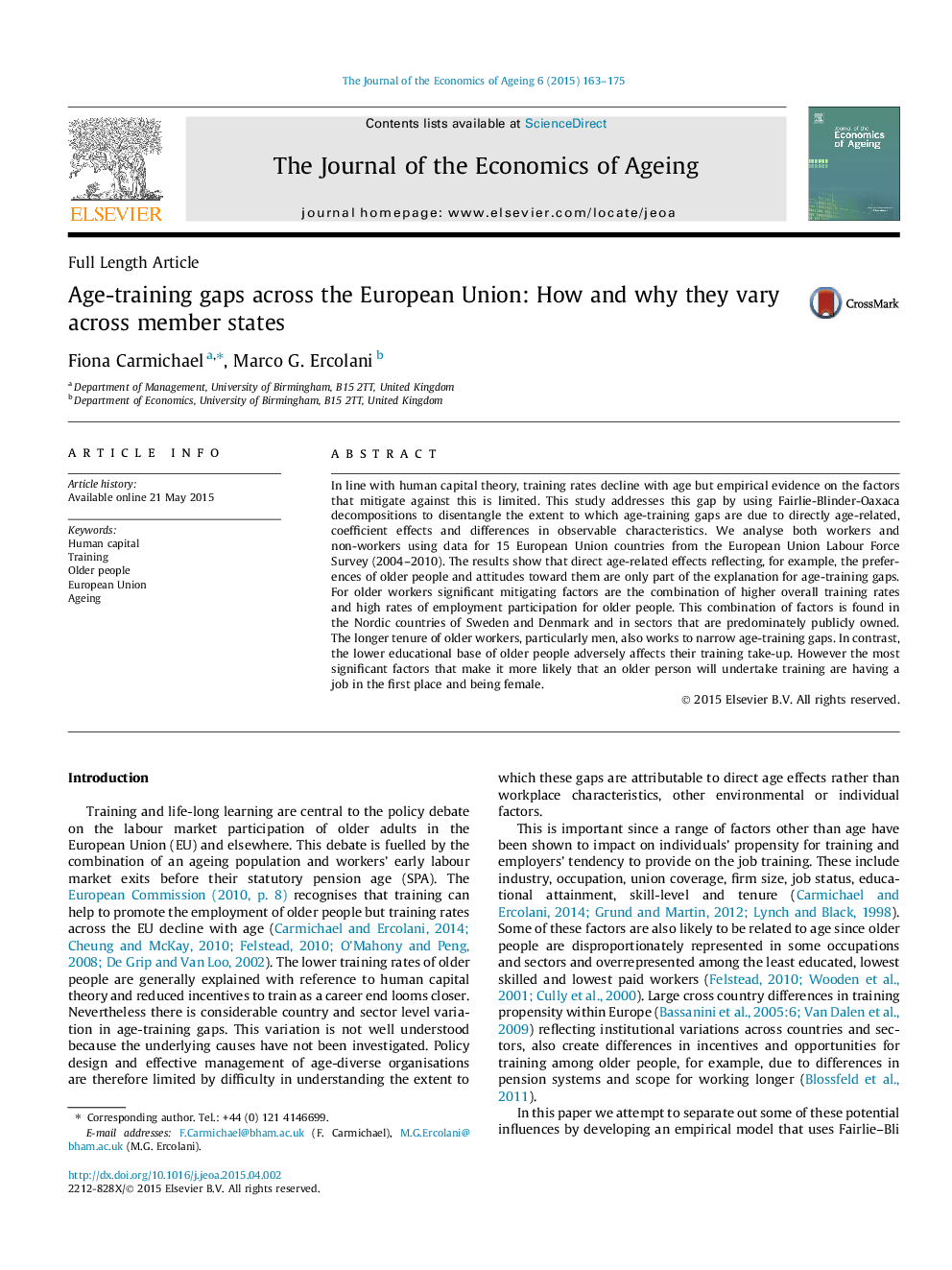| Article ID | Journal | Published Year | Pages | File Type |
|---|---|---|---|---|
| 7360074 | The Journal of the Economics of Ageing | 2015 | 13 Pages |
Abstract
In line with human capital theory, training rates decline with age but empirical evidence on the factors that mitigate against this is limited. This study addresses this gap by using Fairlie-Blinder-Oaxaca decompositions to disentangle the extent to which age-training gaps are due to directly age-related, coefficient effects and differences in observable characteristics. We analyse both workers and non-workers using data for 15 European Union countries from the European Union Labour Force Survey (2004-2010). The results show that direct age-related effects reflecting, for example, the preferences of older people and attitudes toward them are only part of the explanation for age-training gaps. For older workers significant mitigating factors are the combination of higher overall training rates and high rates of employment participation for older people. This combination of factors is found in the Nordic countries of Sweden and Denmark and in sectors that are predominately publicly owned. The longer tenure of older workers, particularly men, also works to narrow age-training gaps. In contrast, the lower educational base of older people adversely affects their training take-up. However the most significant factors that make it more likely that an older person will undertake training are having a job in the first place and being female.
Related Topics
Social Sciences and Humanities
Economics, Econometrics and Finance
Economics and Econometrics
Authors
Fiona Carmichael, Marco G. Ercolani,
